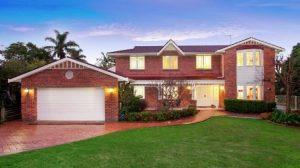The transmission of an Property Valuation can result in the sale of all or part of the real estate that makes it up. If agreements on the price of plots in kind of land or meadows are generally found, it is different for the prices for buildings.
I. Valuation of farm assets
A. Sale of Capitalized Land
1. Farmland
Land is valued using the local sales comparison method. The valuation is based on actual transaction references (SAFER, DVF base, PERVAL). It is necessary that the goods sold have the same characteristics (land for agricultural use, identical level of fertility, identical legal status) and a comparable location. A classification of the plots in relation to the sales references is carried out taking into account the agronomic criteria, the shape of the plot, the size, the slope, the access, the easements, the environmental constraints,…
Being active, these plots have been purchased by the company and are therefore free of occupation.
2. Buildings with land
The land is valued according to the method by comparison with local references, taking into account the urban planning classification, easements and environmental constraints.
Agricultural buildings are valued at use value. This corresponds to the new value of the building, after deduction of dilapidation and an adaptation coefficient:
Price per m² (new, modern materials) x Surface area x (- 1% dilapidation) x Adaptation coefficient (between 0 and 1).

Obsolescence is the state of wear of a thing by its use or by time. A component-based approach is used, the different construction elements (foundations, cladding, framework, etc.) having different lifespans. It is therefore necessary to determine the importance of the materials in relation to the asset, in other words, the share of each trade in the average cost of construction, in order to thus approximate the lifespan of the materials according to the use of the building and its maintenance.
The adaptation coefficient is determined in relation to the activity of the building and its capacity according to the desired objective. This coefficient is specific to the operation. This is linked to the size of the operation, the optimization of space and the consistency of the buildings with each other. The functionality is also dependent on the design of the building (length, depth, height, width, etc.).
See More : http://directeyewear.com.au/how-property-melbourne-valuation-is-able-to-calculate-propertys-value/

